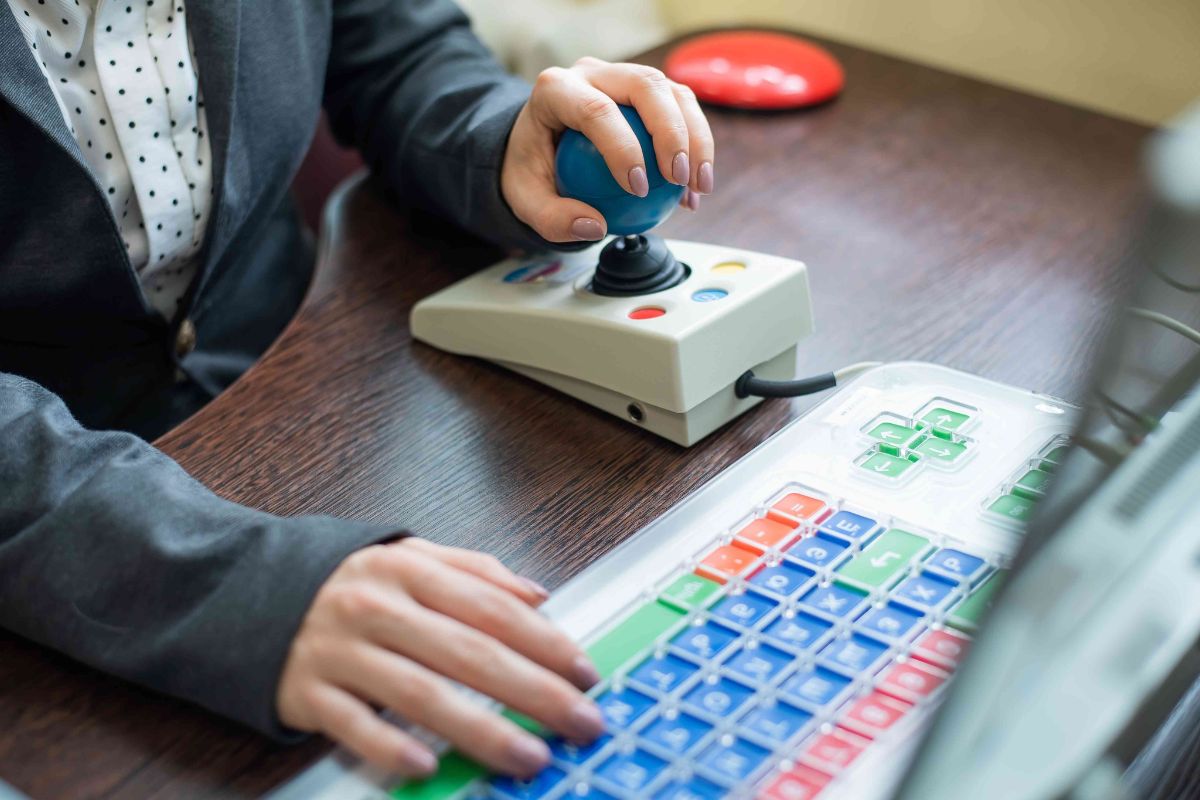
Assistive technology has transformed lives by providing tools that help people with disabilities perform tasks they might otherwise find challenging. From screen readers for the visually impaired to hearing aids for those with hearing loss, these innovations have opened doors to greater independence and inclusion. But what exactly is assistive technology? Simply put, it's any device, software, or equipment designed to help individuals with disabilities. These tools range from simple, low-tech items like pencil grips to advanced, high-tech solutions like speech-generating devices. Why is assistive technology important? It empowers individuals, enhances their quality of life, and promotes equal opportunities. Dive into these 25 facts to learn more about the incredible world of assistive technology and how it continues to make a difference.
Key Takeaways:
- Assistive technology helps people with disabilities do things they might find difficult or impossible. It includes tools like wheelchairs, hearing aids, and special software to make life easier and more enjoyable.
- Innovations in assistive technology, like 3D printing and smart home technology, are making life even better for people with disabilities. The future looks bright with new ideas like artificial intelligence and virtual reality on the horizon.
What is Assistive Technology?
Assistive technology (AT) refers to devices or systems that help individuals with disabilities perform tasks that might otherwise be difficult or impossible. These tools range from simple, low-tech gadgets to sophisticated, high-tech systems.
- Assistive technology can include anything from wheelchairs to speech-to-text software.
- AT aims to increase, maintain, or improve the functional capabilities of individuals with disabilities.
- The concept of assistive technology has been around for centuries, evolving with advancements in technology.
Types of Assistive Technology
There are various types of assistive technologies designed to meet different needs. These tools can be categorized based on their function and the type of disability they address.
- Mobility aids like wheelchairs, walkers, and scooters help individuals move around more easily.
- Hearing aids amplify sound for those with hearing impairments.
- Visual aids such as screen readers and magnifiers assist those with visual impairments.
- Communication devices like speech-generating devices help individuals with speech disabilities communicate.
- Cognitive aids include software and apps that help with memory, attention, and other cognitive functions.
Benefits of Assistive Technology
The benefits of assistive technology are vast, impacting various aspects of life for individuals with disabilities.
- AT can significantly improve the quality of life for users by increasing their independence.
- It enables individuals to participate more fully in educational, social, and recreational activities.
- AT can enhance employment opportunities by providing tools that help individuals perform job-related tasks.
- It can also reduce the need for personal assistance, thereby lowering caregiving costs.
Challenges in Accessing Assistive Technology
Despite its benefits, there are challenges in accessing assistive technology. These barriers can prevent individuals from obtaining the tools they need.
- Cost is a significant barrier, as many assistive devices are expensive.
- Lack of awareness about available technologies can prevent individuals from seeking help.
- Limited availability in certain regions can make it difficult for people to access the necessary tools.
- Insurance coverage often does not include assistive devices, adding to the financial burden.
Innovations in Assistive Technology
Innovations in assistive technology continue to emerge, offering new solutions and improving existing ones.
- 3D printing is being used to create custom prosthetics and orthotics.
- Smart home technology allows individuals to control their environment through voice commands or mobile apps.
- Wearable technology like smart glasses can provide real-time assistance to individuals with visual impairments.
- Robotics are being developed to assist with tasks ranging from personal care to mobility.
The Future of Assistive Technology
The future of assistive technology looks promising, with ongoing research and development aimed at creating more effective and accessible solutions.
- Artificial intelligence is being integrated into assistive devices to provide more personalized assistance.
- Virtual reality is being explored for therapeutic purposes, such as rehabilitation and pain management.
- Brain-computer interfaces are being developed to help individuals control devices using their thoughts.
- Telehealth services are expanding, providing remote access to assistive technology and support.
- Universal design principles are being adopted to create products that are accessible to everyone, regardless of ability.
The Power of Assistive Technology
Assistive technology changes lives. From screen readers helping the visually impaired to speech recognition software aiding those with mobility issues, these tools break barriers. They make education accessible, enhance communication, and promote independence. Hearing aids, prosthetics, and adaptive keyboards are just a few examples of how technology supports diverse needs.
Understanding these innovations helps us appreciate their impact. They empower individuals, fostering inclusion in schools, workplaces, and communities. As technology advances, so does its potential to assist even more people.
By embracing assistive technology, we create a more inclusive world. It’s not just about gadgets; it’s about giving everyone a fair chance to succeed. So, next time you see someone using a device, remember the difference it makes. Assistive technology isn’t just a tool; it’s a lifeline.
Frequently Asked Questions
Was this page helpful?
Our commitment to delivering trustworthy and engaging content is at the heart of what we do. Each fact on our site is contributed by real users like you, bringing a wealth of diverse insights and information. To ensure the highest standards of accuracy and reliability, our dedicated editors meticulously review each submission. This process guarantees that the facts we share are not only fascinating but also credible. Trust in our commitment to quality and authenticity as you explore and learn with us.


